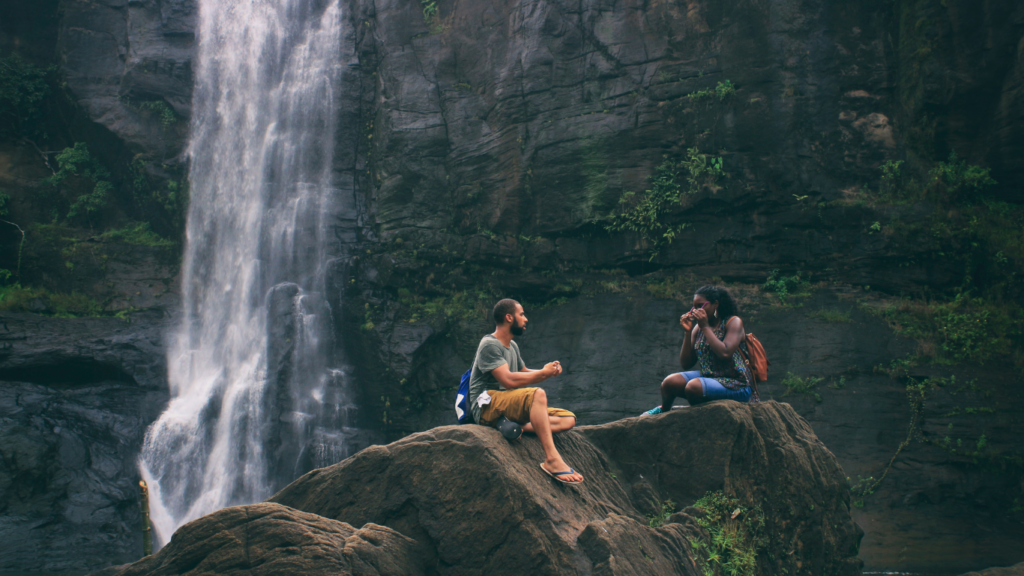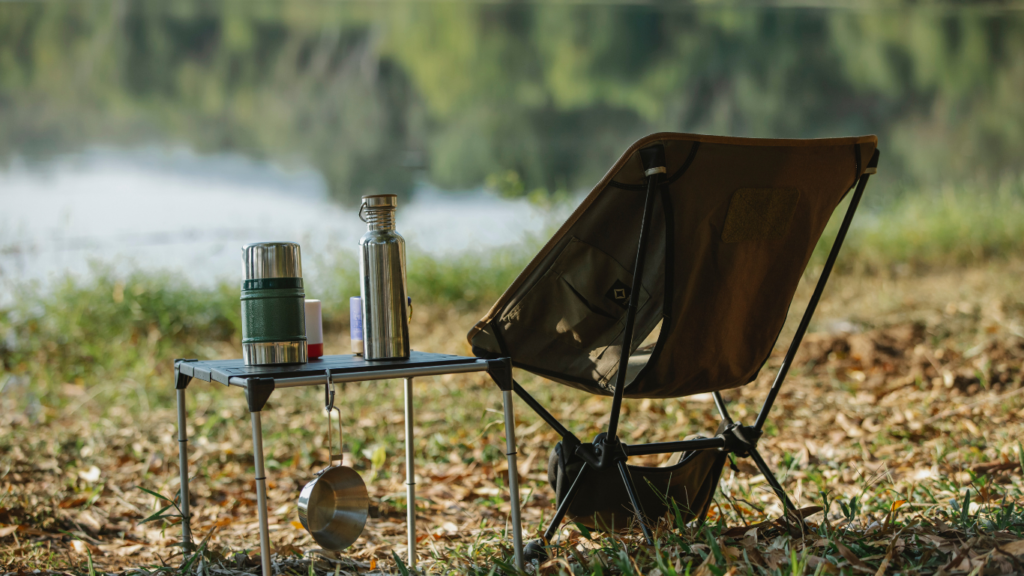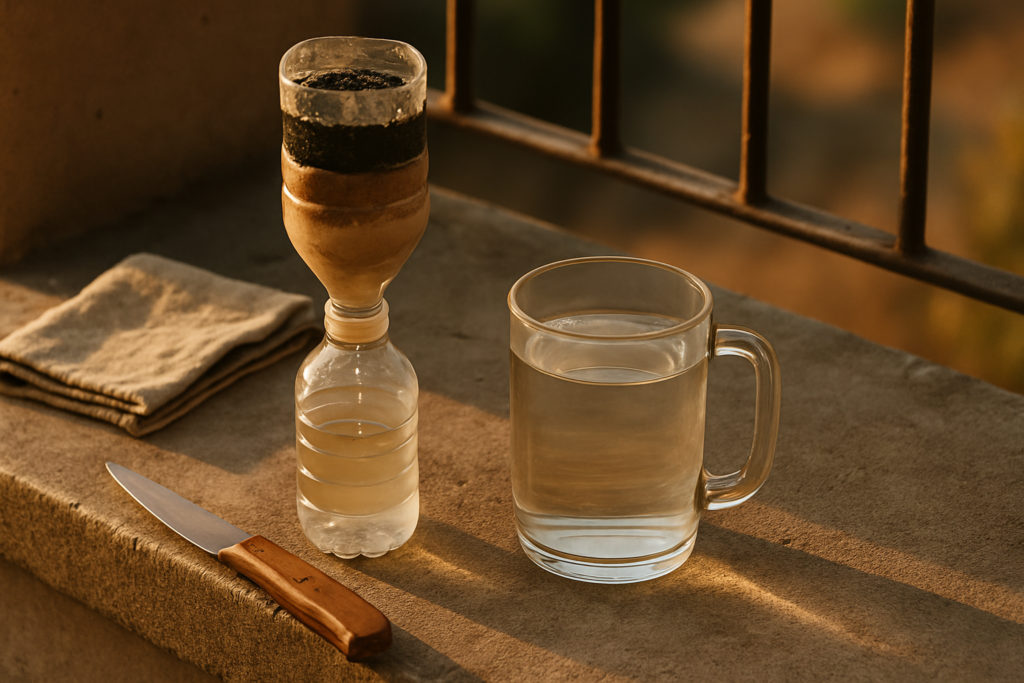Understanding the Importance of Water
Water is essential for human survival. Our bodies are about 60% water, needing it for almost every function, from regulating temperature to transporting nutrients. A person can survive weeks without food, but only a few days without water. This critical need becomes even more vital in the wilderness, where physical exertion increases and resources are limited.
Dehydration poses serious health risks. It results in symptoms like:
- dizziness
- confusion
- fatigue
In severe cases, dehydration leads to heatstroke, kidney failure, or even death. Staying hydrated is crucial for maintaining both physical performance and mental sharpness in challenging environments.
Natural water sources in the wilderness can be contaminated. Bacteria, parasites, and viruses lurk in streams, lakes, and rivers. These pathogens cause illnesses such as Giardia and dysentery. Understanding how to purify water ensures safe consumption and prevents debilitating diseases, essential for sustaining energy and health.
Water is also vital for food preparation and hygiene. Cooking with contaminated water renders food unsafe, risking gastrointestinal infections. Washing wounds with impure water introduces harmful microbes, leading to infections. Clean water supports not only hydration but also safe food handling and personal cleanliness, which are vital for overall well-being in the wild.
Finding Water Sources
Finding water in the wilderness is essential for survival. Here are some effective methods to locate various water sources.
Rivers and Streams
Rivers and streams provide reliable water sources. Fast-moving waters often contain fewer contaminants than stagnant waters. Locate rivers by following valleys or downward slopes. Look for vegetation, as green plants often indicate proximity to water.
Lakes and Ponds
Lakes and ponds offer substantial water quantities, but they can be more susceptible to contamination. Opt for larger bodies of water when possible; they often have less concentrated pollutants. Approach the water’s edge carefully, avoiding areas with evident animal activity.
Rainwater
Rainwater is one of the safest wilderness water sources. Use any available items—tarps, plastic sheets, or even large leaves—to collect rainwater. Gather water from surfaces directly and store it in containers for later use to ensure availability during dry periods.
Plants and Vegetation
Certain plants store water naturally. Bamboo, cacti, and vines can provide drinkable water when cut properly. Avoid unknown plants, as some may contain toxins. Look for dew on leaves in the morning and collect it using absorbent cloths.
Animal Trails
Animal trails often lead to water. Follow paths created by wildlife, especially those that converge into a single route. Be cautious and mindful of potential hazards while following these trails.
Finding water in the wilderness requires awareness and resourcefulness. Prioritize known water sources while remaining vigilant about potential contaminants.
Assessing Water Safety
Finding water in the wilderness is just the first step; ensuring it’s safe to drink is the next. Drinking contaminated water can cause severe health problems. Here’s how to assess water safety.
Signs of Contaminated Water
Observing physical signs is crucial. Water with a strange odor, unusual color, or debris floating on the surface is likely contaminated. Green or red algae indicates possible toxins. Avoid water sources near heavy human or animal activity since they might contain bacteria, viruses, or parasites. If the water is near industrial or agricultural areas, it can contain chemical pollutants.
Evaluating Water Clarity
Clear water is more likely safe but not guaranteed. Particles suspended in water can hide bacteria and viruses. Check for clarity by scooping water into a transparent container and letting it sit. If sediment settles quickly and the water remains clear, it’s a good sign. However, clarity isn’t a definitive safety indicator. Boiling or using filtration methods is still necessary. Filtering through cloth can remove larger particles and improve clarity before further purification steps.
Purification Methods
Purifying water in the wilderness ensures it’s safe for drinking, cooking, and hygiene. Various methods effectively remove contaminants. Below are the most reliable techniques.
Boiling
Boiling is one of the simplest and most effective methods. Bringing water to a rolling boil for at least one minute kills most pathogens, including bacteria, viruses, and parasites. At altitudes above 6,500 feet, boil for three minutes to ensure efficacy. Using this method requires a heat source, such as a campfire or portable stove.
Filtration
Filtration devices physically remove contaminants from water. Portable water filters typically use micro, nano, or ultrafiltration technology and come in various forms like pumps or gravity-fed systems. Many filters can eliminate bacteria and protozoa but may not remove viruses. Ensure to pair with chemical purification for comprehensive safety.
Chemical Purification
Chemical purification involves using substances like iodine or chlorine dioxide to disinfect water. Follow the manufacturer’s instructions for dosage; generally, 2-5 drops per liter are common. Wait times vary, but most chemicals need at least 30 minutes to take effect. This method effectively kills bacteria and viruses but might not eliminate all protozoa.
Solar Disinfection
Solar disinfection (SODIS) utilizes UV rays to purify water. Fill a clear plastic bottle with water and expose it to direct sunlight for at least six hours. This method works best in sunny conditions and can reduce bacterial and viral contamination. However, it may not be as effective against all types of protozoa and requires clear water for optimal results.
Distillation
Distillation involves boiling water and collecting the steam, which condenses into purified water. This method eliminates most contaminants, including heavy metals, salts, and microorganisms. Constructing a basic distillation apparatus might be time-consuming, but it’s a reliable way to ensure water purity. A solar still is a practical solution in sunny environments.
Tools and Equipment for Water Purification

Ensuring access to clean water in the wilderness is vital. Several tools and equipment can help purify water effectively.
Portable Filters
Portable filters are lightweight and easy to carry. These devices typically use a pump or gravity to push water through a filter cartridge. Filters like the Sawyer Mini and LifeStraw remove bacteria and protozoa from the water, making it safe to drink. Filter pores usually measure 0.1 microns, small enough to catch most harmful organisms. Regular maintenance is required to ensure efficacy, including cleaning or replacing the filter element as needed.
UV Purifiers
UV purifiers use ultraviolet light to deactivate harmful microorganisms in water. Devices like the SteriPEN can treat up to a liter of water in just 90 seconds. UV light disrupts the DNA of bacteria, viruses, and protozoa, rendering them harmless. These purifiers are lightweight and compact, making them ideal for backpackers. However, they require batteries or a power source to function, which can be a constraint in extended trips.
Water Purification Tablets
Water purification tablets offer a quick and simple method to treat water. Tablets contain chemicals like chlorine dioxide or iodine, which kill bacteria, viruses, and protozoa. Brands like Aquamira and Katadyn Micropur are popular options. One tablet usually treats a liter of water, and it takes around 30 minutes for the chemicals to work. Despite their convenience, tablets can leave an aftertaste and may not be suitable for highly contaminated water sources.
Each of these tools plays a crucial role in ensuring safe drinking water in the wilderness. Choose the right tool based on the specific requirements of your outdoor adventure.
Essential Survival Tips
Finding and purifying water in the wilderness is fundamental. Here are some essential survival tips to ensure you stay hydrated and make the most of limited water resources.
Hydration Techniques
- Prioritize effective hydration techniques to maintain your health in the wilderness.
- Drink small amounts frequently to avoid rapid dehydration, especially when exerting yourself.
- Early morning and late evening are the best times to drink as temperatures are cooler, reducing sweat loss.
- In emergencies, consume water from plants like cacti or bamboo, but make sure to avoid plants with milky sap or unfamiliar berries.
Water Conservation Strategies
Implement water conservation strategies to prolong your supply. Ration water consumption and avoid drinking excessively if you’re unsure of the next water source. Carry collapsible water containers to store extra water when it’s abundant. Cover exposed skin and reduce physical activities during peak heat hours to minimize sweat loss. Remember, efficient water usage is crucial when surviving in the wilderness.





